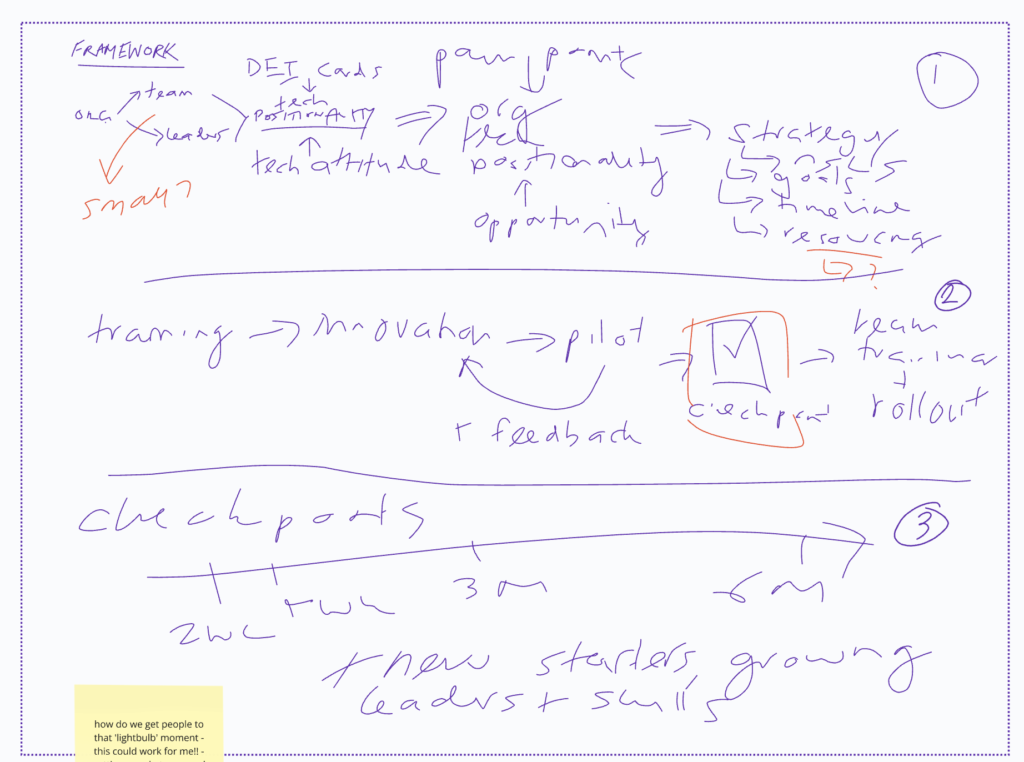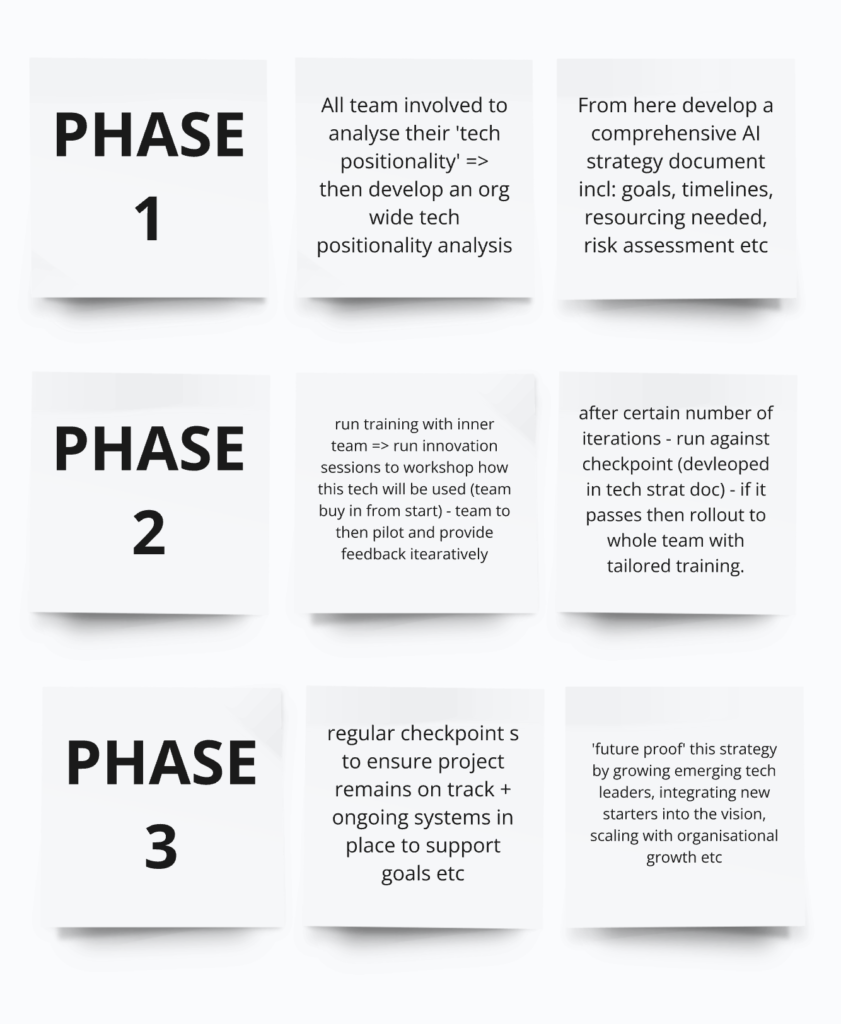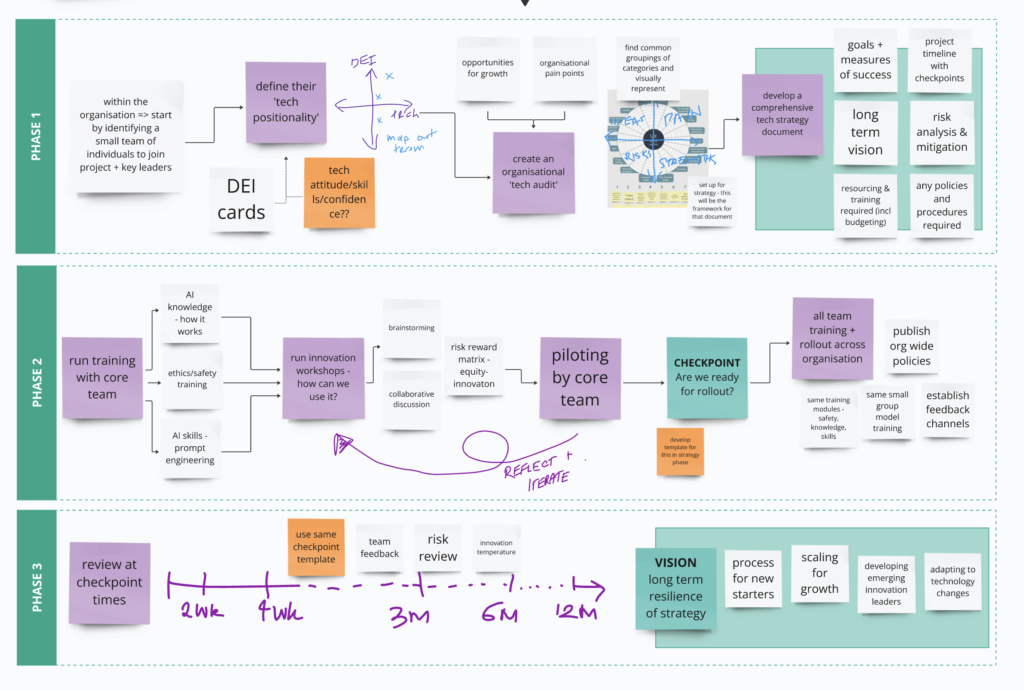Mikayla Peak
BLOG 03
Wednesday 7th August
Context

This week, I moved beyond ideation and began prototyping a concrete framework for the AI roadmap toolkit. The brainstorming sessions helped me conceptualise the structure and phases necessary to developing the toolkit. The process involved visual mapping of the toolkit’s components, identifying critical phases for implementation, and outlining the resources I need to develop. It was exciting to see the abstract ideas from earlier discussions take on a more tangible form.
Action

Prototyping this toolkit has taught me the importance of creating a structured, phased approach to implementation. By breaking down the process into three distinct phases—tech positionality analysis, piloting, and rollout—I was able to visualise how each step flows into the next one. This phased approach ensures that the toolkit is not just a ‘quick-fix’ solution but a dynamic resource sets up an organisation with a long-term DEI aligned technology strategy. Additionally, the concept of regular checkpoints, with goals developed within the organisation, was a critical insight – emphasising the importance of ongoing DEI assessment to maintain long-term resilience.
Result

My next steps involve refining this prototype, particularly focusing on developing the resources that make up the toolkit. I want to continue to refine the toolkit’s overall structure through seeking feedback from my tutors and peers. The visual mapping exercise has highlighted the need for clarity in communication—both in the toolkit’s content and its design—to all involved in the project within the organisation. Moving forward, I’ll be diving deeper into how this communication can give a voice to all levels of an organisation and uphold DEI principles in these discussions.
Learning
This prototyping phase has been an eye-opening learning experience. Visualising the toolkit’s structure has deepened my understanding of the importance of a phased approach and the necessity of ongoing checkpoints. I’ve learned that a communication strategy is essential when developing a resource such as this, especially when it needs to be adaptable across different organisations. The process also highlighted the significance of building in feedback loops, not just at the start of the project, but as a key component for ensuring the developed technology strategy maintains it’s relevance and effectiveness over time. While there’s still work to be done, these insights have given me a clearer vision of how to move forward with confidence and purpose.